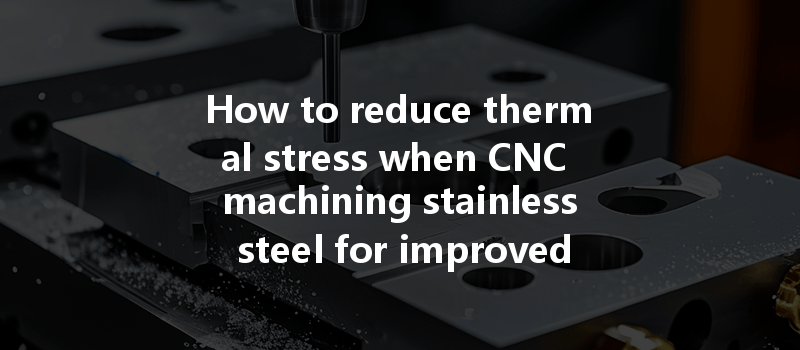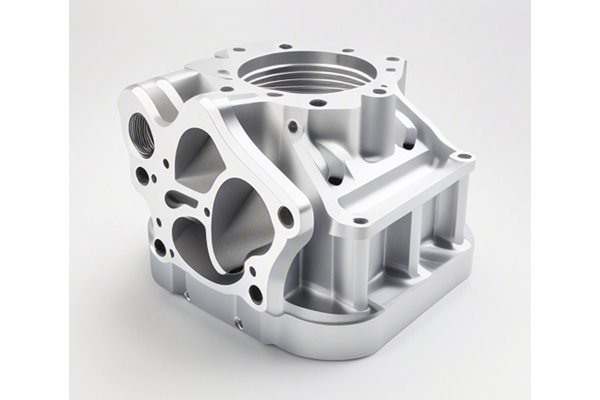In the world of CNC machining, achieving precise tolerances while preserving the integrity of the material is a paramount concern, particularly when it comes to stainless steel. As one of the most widely used materials in various industries due to its strength, corrosion resistance, and aesthetic appeal, stainless steel presents unique machining challenges. Thermal stress is one such challenge that can negatively impact both the machining process and the performance of finished parts. This article will delve into strategies to mitigate thermal stress during CNC machining of stainless steel, ensuring improved performance of machined components. With insights from industry practices and expertise from YL Machining, we aim to provide a comprehensive understanding of thermal stress and its mitigation in CNC machining.
Understanding Thermal Stress in CNC Machining
What is Thermal Stress?
Thermal stress arises due to the uneven temperature distribution within a material during machining processes. As stainless steel is machined, friction between the cutting tool and the workpiece generates heat, which can lead to localized temperature increases. When temperatures rise, the material expands, and if this expansion is not uniform, stresses develop within the workpiece. Upon cooling, these stresses can cause warping, dimensional inaccuracies, or even cracking in severe cases.
Why is Thermal Stress a Concern in Stainless Steel Machining?
Stainless steel, particularly in varieties such as 304, 316, or higher alloy grades, exhibits low thermal conductivity. This means that heat generated during machining does not dissipate quickly, exacerbating thermal stress. Moreover, the resultant microstructural changes in the material can affect its mechanical properties, including hardness and strength, which leads to performance issues in final applications. For instance, if a tolerance is compromised due to thermal deformation, the part may not fit or function as intended, leading to costly rework or scrap.
Strategies to Reduce Thermal Stress in CNC Machining
Tool Selection and Optimization
The choice of cutting tool material plays a pivotal role in managing thermal stress. Tools made from high-speed steel (HSS) or carbide not only allow for effective cutting but also withstand the high temperatures generated during machining. Coated tools, such as those with titanium nitride (TiN) or aluminum oxide (Al2O3), offer enhanced thermal resistance and reduced friction, which can help minimize thermal deformation of both the tool and the workpiece.
Optimizing the geometry of the cutting tool can lead to more effective chip formation and better heat dissipation. Sharp cutting edges reduce cutting forces and heat generation, while the rake angle determines how efficiently the chip is removed. Additionally, using tools designed to minimize cutting pressure can lower the heat induced in the material, thus reducing thermal stress.
Cooling and Lubrication Strategies
Implementing effective cooling systems is critical in reducing thermal stress. Using flood coolant, misting systems, or air cooling can significantly lower the temperature of the cutting area. Flood coolant, in particular, allows for better heat dissipation and helps prevent the material from overheating. The choice of coolant should also consider its thermal conductivity and cooling effectiveness.
Selecting the appropriate coolant for stainless steel machining is vital. Neat oils and water-soluble coolants can help in reducing friction and dissipating heat. However, advancements in coolant technology have introduced synthetic and semi-synthetic coolants that provide superior cooling properties and better lubrication. At YL Machining, we emphasize the use of eco-friendly coolants that not only reduce thermal stress but also respect environmental considerations.
Machining Parameters Optimization
Finding the optimal balance between cutting speed and feed rate is essential for thermal management. Higher cutting speeds can generate excessive heat, while slower speeds may result in inefficient machining and increased tool wear. It is recommended to begin with moderate cutting speeds and feed rates, gradually adjusting based on observed performance and thermal behavior.
The depth of cut has a direct influence on thermal stress. Shallow depths allow for faster heat dissipation and reduce thermal buildup in the workpiece. Reducing the depth of cut can also extend tool life by minimizing wear and maintaining better dimensional accuracy.
Tool Path Strategies

Adaptive machining techniques allow CNC programs to adjust in real-time based on feedback from the machining process. By monitoring cutting conditions and tool wear, the system can automatically modify the cutting parameters to reduce thermal stress. This capability leads to an overall increase in productivity while ensuring part accuracy.
Choosing the correct cutting path, such as zigzag cutting versus contour cutting, can further help in thermal management. Contour cutting often reduces the overall cutting time and lessens the exposure of the material to prolonged friction, leading to lower heat generation.
Material Preparation and Handling
Pre-conditioning stainless steel through processes like stress relief annealing can enhance its machinability and reduce the risk of thermal stress. By removing residual stresses before the machining process, the material is less likely to warp or deform during cutting.
Utilizing proper fixturing techniques is crucial to secure the workpiece during machining and minimize movement. High clamping pressure on certain areas, if not adequately controlled, can lead to thermal distortion. Using fixtures that provide uniform support across the part can help mitigate these issues.
Additional Considerations
Post-Machining Processes
Post-machining heat treatments, such as annealing, can relieve any residual stresses that might have developed during machining. This process can enhance material properties and ensure that the part performs as intended in final applications.
Implementing surface treatments like hardening or coating can provide additional protection against wear and corrosion while maintaining dimensional integrity. Surface coatings can also alter the thermal conductivity characteristics of the part, helping in thermal management.
Monitoring and Quality Control
To maintain dimensional accuracy and reduce risks associated with thermal stress, employing advanced measurement tools becomes essential. Non-contact measurement techniques, such as laser scanning or vision systems, can detect dimensional deviations and allow for timely interventions.
Establishing performance feedback loops between machining processes and quality control can provide insights into how thermal stress affects part quality. Continuous monitoring and adjustment based on real-time data can drastically reduce defects and enhance overall productivity.
Managing thermal stress when CNC machining stainless steel is vital for ensuring precision, performance, and reliability of the finished parts. By understanding the mechanics of thermal stress and employing the strategies outlined in this article, manufacturers can mitigate risks and enhance the machining process. At YL Machining, our commitment to excellence drives us to continually refine our practices and adopt innovative solutions that optimize our machining processes and better serve our clients. As the demand for high-quality, precisely machined components continues to grow, addressing thermal stress remains a critical aspect of CNC machining that cannot be overlooked.
By implementing effective tool selection, optimizing machining parameters, utilizing advanced cooling techniques, and establishing rigorous quality control measures, we can achieve superior results that not only meet but exceed customer expectations in the stainless steel machining sector.






